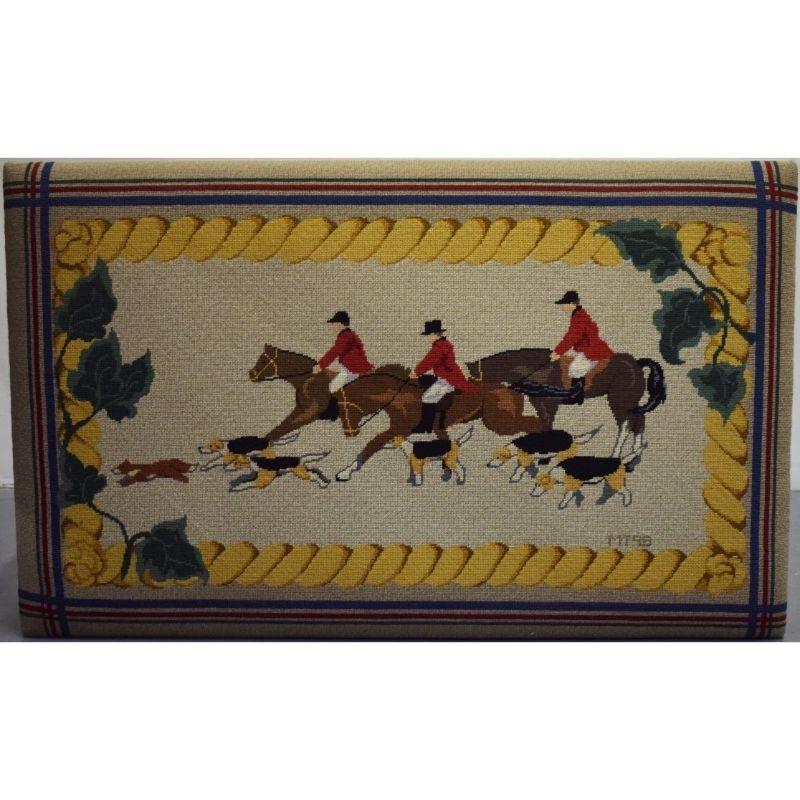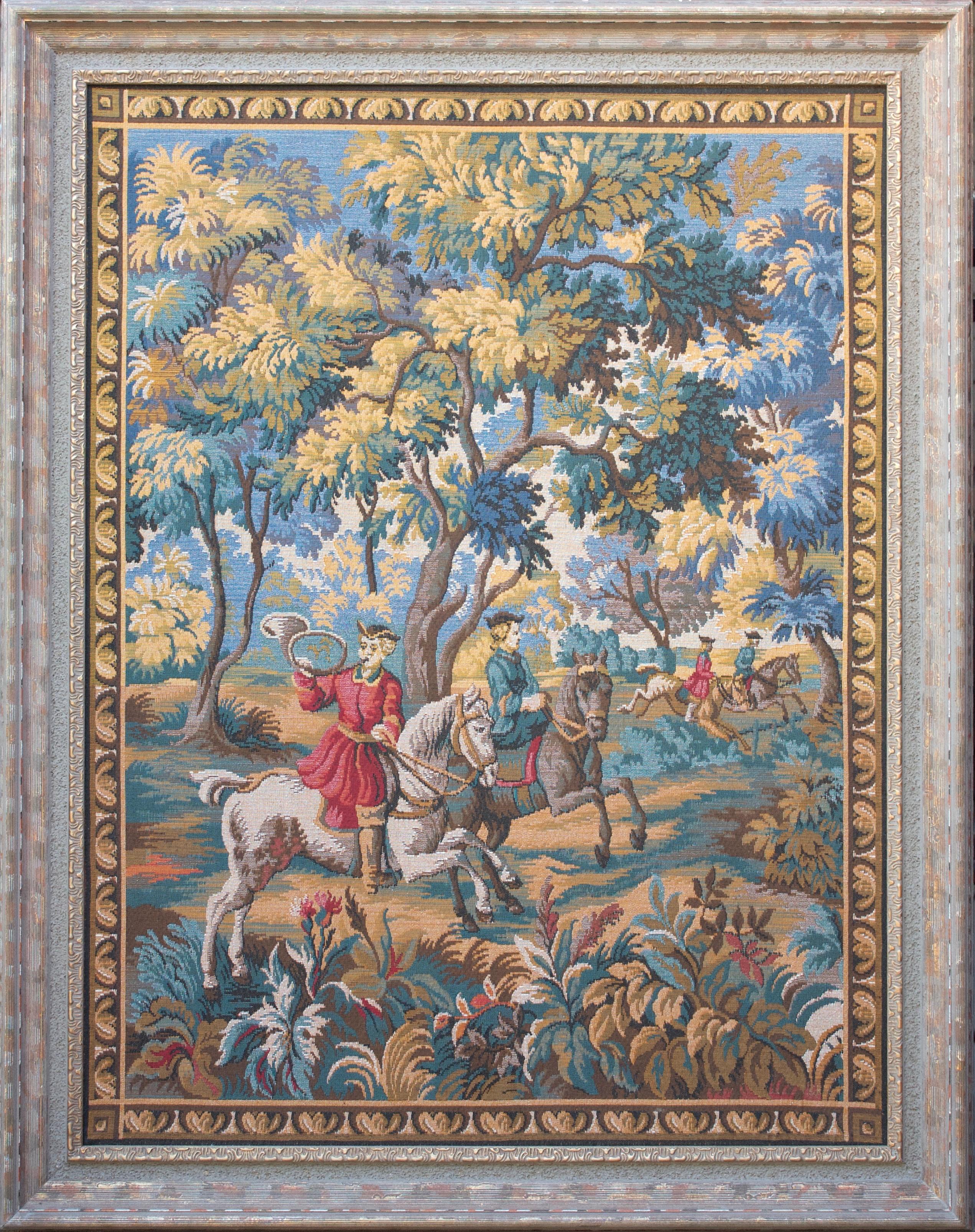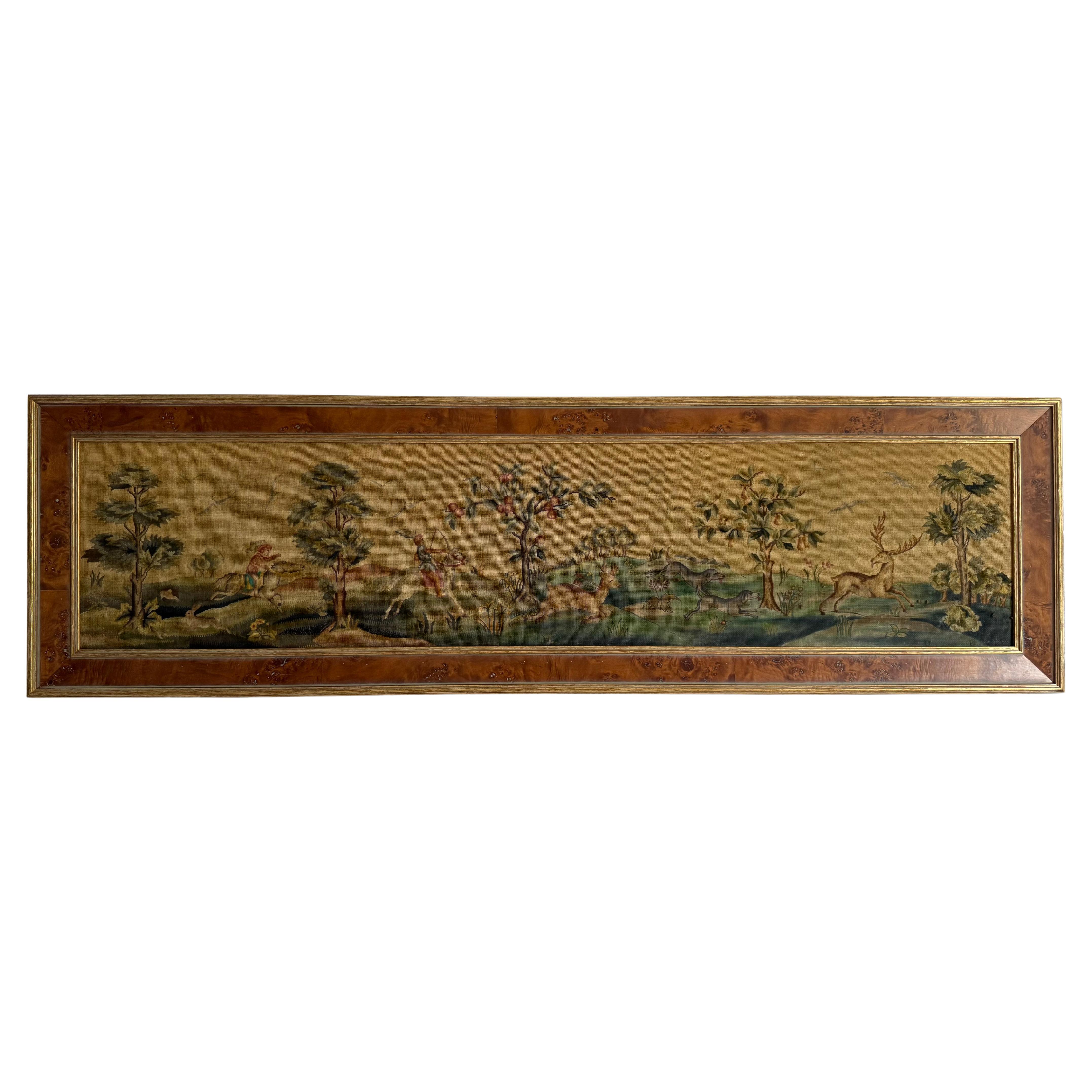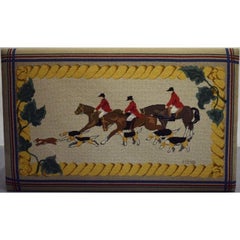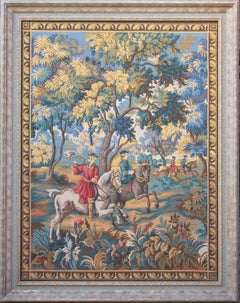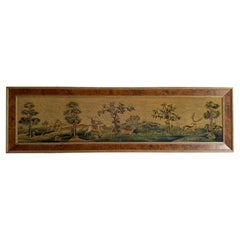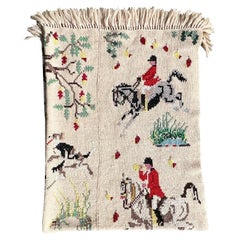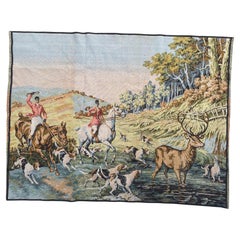Items Similar to Petit-Needlepoint Radnor Fox-Hunt Panel
Want more images or videos?
Request additional images or videos from the seller
1 of 12
UnknownPetit-Needlepoint Radnor Fox-Hunt Panel
$1,500
£1,167.85
€1,328.18
CA$2,158.14
A$2,370.62
CHF 1,238.90
MX$28,271.65
NOK 15,687.86
SEK 14,614.56
DKK 9,924.80
About the Item
Petit-needlepoint foxhunter w/ fox-head top centre
Ex- equestrian estate in Chester Co, PA
Sz: 14”H x 16”W
Perfect library/ den/ club room accent piece
either under tabletop glass or framed for wall-hanging
Stamped on underside of canvas: Green Oak Co Haverford Penna
- Dimensions:Height: 14 in (35.56 cm)Width: 16 in (40.64 cm)
- Medium:
- Period:
- Condition:
- Gallery Location:Bristol, CT
- Reference Number:Seller: 320291stDibs: LU126017684212
About the Seller
4.8
Vetted Professional Seller
Every seller passes strict standards for authenticity and reliability
Established in 2000
1stDibs seller since 2019
135 sales on 1stDibs
Typical response time: 1 hour
- ShippingRetrieving quote...Shipping from: Bristol, CT
- Return Policy
More From This Seller
View All"Hand-Needlepoint Fox-Hunter Framed Panel"
Located in Bristol, CT
Panel Sz: 14 1/2"H x 26 3/4"W
Frame Sz: 16 1/4"H x 28 1/2"W
Category
20th Century More Art
Materials
Wool
Hand-Needlepoint Fox-Hunt Bench/ Table Signed: MT 98
Located in Bristol, CT
Sz: 45 1/2"W x 28"L x 20"H
Category
20th Century More Art
Materials
Wool, Wood
Fox-Hunter In A Landscape O/C by Paul Brown
Located in Bristol, CT
Canvas Sz: 21 1/2"H x 28 1/2"W
Frame Sz: 24 5/8"H x 31 7/8"W
Provenance: The Estate of Paul Desmond Brown
Paul Desmond Brown (American, 1893-1958) was an artist, illustrator, and ...
Category
20th Century Paintings
Materials
Canvas, Oil
Victorian 19thC Needlework Panel Of A Scottish Huntsman Signed J
Located in Bristol, CT
Panel Sz: 22"H x 14"W
Frame Sz: 28 3/4"H x 20 3/4"W
Mounted on burgundy felt
Category
19th Century More Art
Materials
Fabric, Felt
Hand-Needlepoint c1970s Jockey/ Racehorse Tray
Located in Bristol, CT
Needlepoint Panel Sz: 7 3/4"H x 17 5/8"W
Frame Sz: 9 1/2"H x 19 1/4"W
Category
20th Century More Art
Materials
Wool
Fox-Hunt Framed Lithograph
Located in Bristol, CT
Art Sz: 23 1/2"H x 29 1/2"W
Frame Sz: 27 3/4"H x 33 1/2"W
Category
20th Century Prints and Multiples
Materials
Lithograph
You May Also Like
Aubusson Style French Jacquard Tapestry with Hunting Scene
Located in Austin, TX
A lavish French Aubbusson style jacquard tapestry depicting an exciting Renaissance era hunting scene. The scene is set in a dense forest of blue, g...
Category
20th Century Folk Art More Art
Materials
Tapestry
19th Century Hunting Scene Needlepoint Tapestry
Located in Atlanta, GA
This exquisite 19th century needlepoint tapestry captures a lively and detailed pastoral hunting scene, rendered with remarkable craftsmanship and rich, earthy tones. A striking exam...
Category
Antique 19th Century French Tapestries
Materials
Tapestry
Vintage Hand Knitted and Embroidered English Hunting Scene Afghan Throw Blanket
Located in Oklahoma City, OK
A hand-knitted English hunting scene motif afghan. This will be a great bed cover or throw blanket! The overall throw is crocheted with a creamy almost khaki yarn. The scenes are sep...
Category
Mid-20th Century American American Classical Quilts and Blankets
Materials
Yarn
$560 Sale Price
37% Off
pretty vintage French jacquard tapestry « hunt with hounds »
Located in Saint Ouen, FR
Discover the elegance of this exquisite French tapestry featuring a charming scene of a hunt with hounds.
You can see: Riders in hunting attire (red coats, light-colored breeches, ...
Category
Mid-20th Century French Aubusson Tapestries
Materials
Wool, Cotton, Acrylic
Recreation of a French 17th Century Hunting Tapestry
Located in Secaucus, NJ
Recreation of a French 17th century hunting tapestry. The noblemen on horseback with their followers on foot armed with spears. The scene depicts dogs attacking their prey with one w...
Category
Antique 17th Century Chinese Tapestries
Materials
Wool
Early 19th C. Belgian Brussels “Chasse à Courre” Tapestry with Hunting Scene
Located in Dallas, TX
Hang this exceptional and important handwoven tapestry in a living room, library, or grand staircase. Crafted in Belgium circa 1820, this colorful “Chasse à Courre” (hunting with hou...
Category
Antique Early 19th Century Belgian Louis XV Tapestries
Materials
Tapestry
More Ways To Browse
Vintage Needlepoint
Fox Head
Fox Hunt
Black And White Beach Prints
Framed Etching
Vintage Actresses
Black White Photography Rolling Stones
Antique Bourbon
Black And White Beach Photography
The Promise
Black And White Actor Prints
Black And White Drawings Original
Poolside Glamour
Antique Laid Paper
Vintage Chief
Prints In A Mirrored Frame
American Lithographs
Spanish Painters
